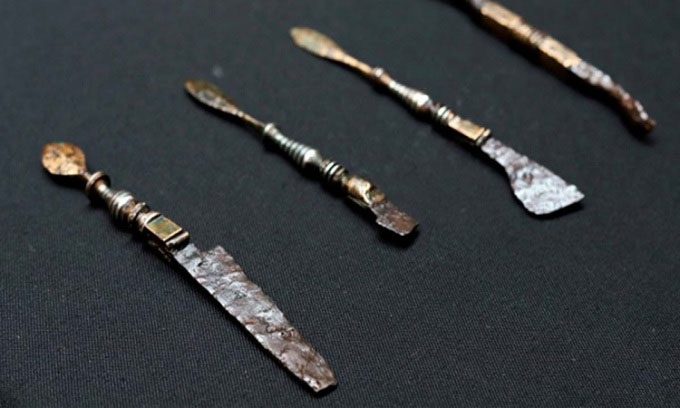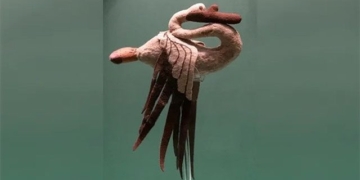Archaeologists Discover the Tomb of an Ancient Roman Doctor Who Lived 2,000 Years Ago and Traveled to Hungary for an Unknown Reason.
Ancient Origins reported on April 27 that the tomb of the doctor is located near Jászberény, a city about 80.5 km from Budapest. The presence of the tomb, which contains the doctor’s medical tools, has puzzled the archaeological team as they cannot explain why he traveled such a distance from his homeland.

Medical tools found in the Roman doctor’s tomb. (Photo: ELTE)
According to Eötvös Loránd University, the tomb has remained intact for approximately 2,000 years. It contains the remains of the doctor, including a complete skull and thigh bone, as well as a wooden chest holding the medical kit and remnants of medications. The medical kit is of high quality, featuring forceps, sewing needles, tweezers, a scalpel with a replaceable blade, and a grinding stone that could be used for mixing medicines or sharpening blades. This is the second complete medical kit from ancient Roman times ever discovered by researchers, with the other found in Pompeii.
Leventu Samu, a research assistant at the university’s archaeological institute, noted that this Roman burial site belonged to a doctor aged between 50 and 60 years, showing no signs of injury or illness. The tomb appears to have been largely undisturbed, aside from signs of animal activity. Current data cannot determine whether the doctor treated a prominent local authority or traveled alongside the Roman army, according to András Gulyás, an archaeologist at the Jász Museum.
Based on the quality of the tools, it can be inferred that the doctor was highly skilled and capable of treating various ailments. Archaeologists will continue to study the remains and medical equipment to gain deeper insights into this period in history. They may also learn more about the medical practices of ancient Romans.
During Roman times, many individuals practiced medicine, including doctors, midwives, and healers. Well-trained doctors were educated in centers such as Alexandria. They held high social status and were compensated for their services. Surgery was often a last resort, performed to amputate limbs, trepan the skull, or remove kidney stones. Without the use of anesthetics, surgical procedures were typically very painful for patients.


















































